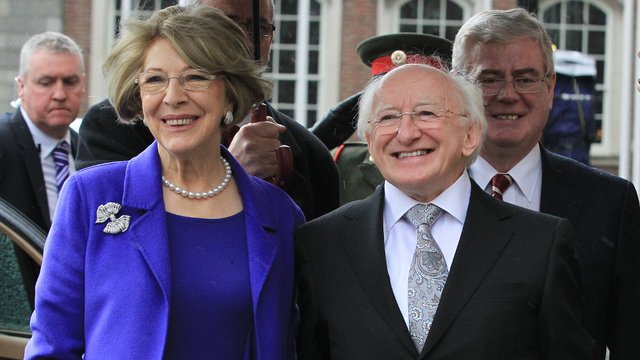
On the day that Michael D Higgins became the ninth President of Ireland he took up residence at Áras an Uachtaráin for the first time.
Arguably the most famous house in the country, the former Viceregal Lodge is located in the Phoenix Park on the northside of Dublin.
Park ranger and amateur architect Nathaniel Clements designed the original house in the mid-18th Century.
It was bought by the administration of the British Lord Lieutenant of Ireland to become his summer residence in the 1780s. His official residence was in the Viceregal Apartments in Dublin Castle – where Michael D Higgins’ inauguration took place on 11/11/11.
The house in Phoenix Park later became known as the Viceregal Lodge, the “out of season” residence of the Lord Lieutenant or Viceroy, where he lived for most of the year from the 1820s onwards – residing only in Dublin Castle from January to St Patrick’s Day in March.
Two murders took places in the ground of the Áras in 1882 when the then Chief Secretary for Ireland, Lord Frederick Cavendish, and his Undersecretary, Thomas Henry Burke, were stabbed to death with surgical knives while walking back to the residence from Dublin Castle.
In 1911 the house underwent a large extension for the visit of King George V and Queen Mary. With the creation of the Irish Free State in 1922, the office of Lord Lieutenant was abolished. The new state planned to place the new representative of the Crown, Governor-General Tim Healy in a new, smaller residence but because of death threats from the anti-treaty IRA, he was installed in the Viceregal Lodge temporarily.
It remained the residence of the Governor-General of the Irish Free State until 1932, when the new Governor General, Domhnall Ua Buachalla, was installed in a specially hired private mansion in the southside of Dublin.
The house was left empty for some years until the office of President of Ireland was created in 1937. In 1938, the first President Douglas Hyde lived there temporarily while plans were made to build a new presidential palace on the grounds.
The outbreak of World War II saved the building, which had now been renamed Áras an Uachtaráin (house of the president in Irish) and by 1945 when the war had it ended it had become too closely identified with the presidency of Ireland to be demolished.
Its poor condition meant, however, that extensive demolition and rebuilding of parts of the building were necessary, notably the kitchens, servants’ quarters and chapel. Since then further restoration work has been carried out on an ongoing basis.
The house itself contains only a handful of state rooms – the state drawing room, large and small dining rooms. The President’s Office and Library, a large ballroom and a presidential corridor called the Francini Corridor which is lined with the busts of past presidents.
Upstairs there are a number of 18th and 19th Century buildings.
It is the place where all Taoisigh as well as Government Ministers receive their seal of office, as well as judges, the Attorney General, the Comptroller and Auditor General and senior commissioned officers of the Defence Forces. It is also the venue for the meetings of the Presidential Commission and the Council of State. Áras an Uachtaráin also houses the headquarters of the Garda Mounted Unit.
Famous visitors in recent times included Queen Elizabeth II and US President Barack Obama earlier this year while past monarchs to visit included Queen Victoria and King George V as well as US presidents John F Kennedy, Richard Nixon, Ronald Reagan and Bill Clinton.
Princess Grace of Monaco and Pope John Paul II are other famous faces who have visited.
Although the house has 92 rooms, many of these are used for storage of presidential files, for household staff and official staff with guests generally staying elsewhere, most recently in nearby Farmleigh.
There’s certainly plenty of history in the Áras and now Michael D will be its newest resident.
Best of luck to him in the role.
The Áras is open to the public for free tours every Saturday.











